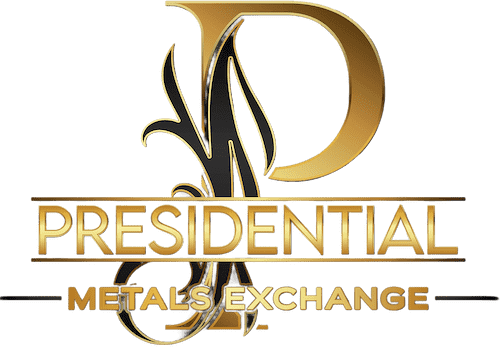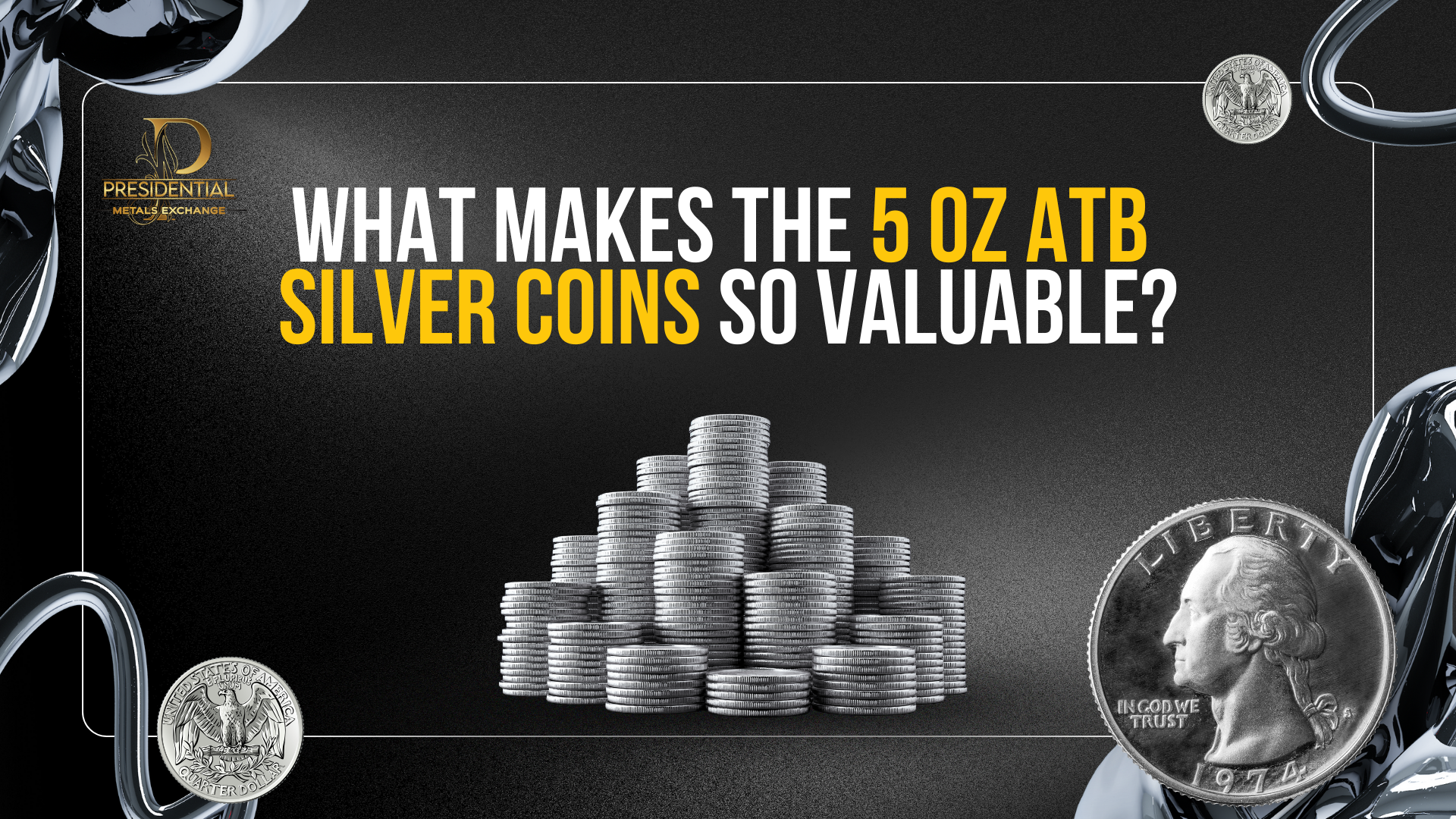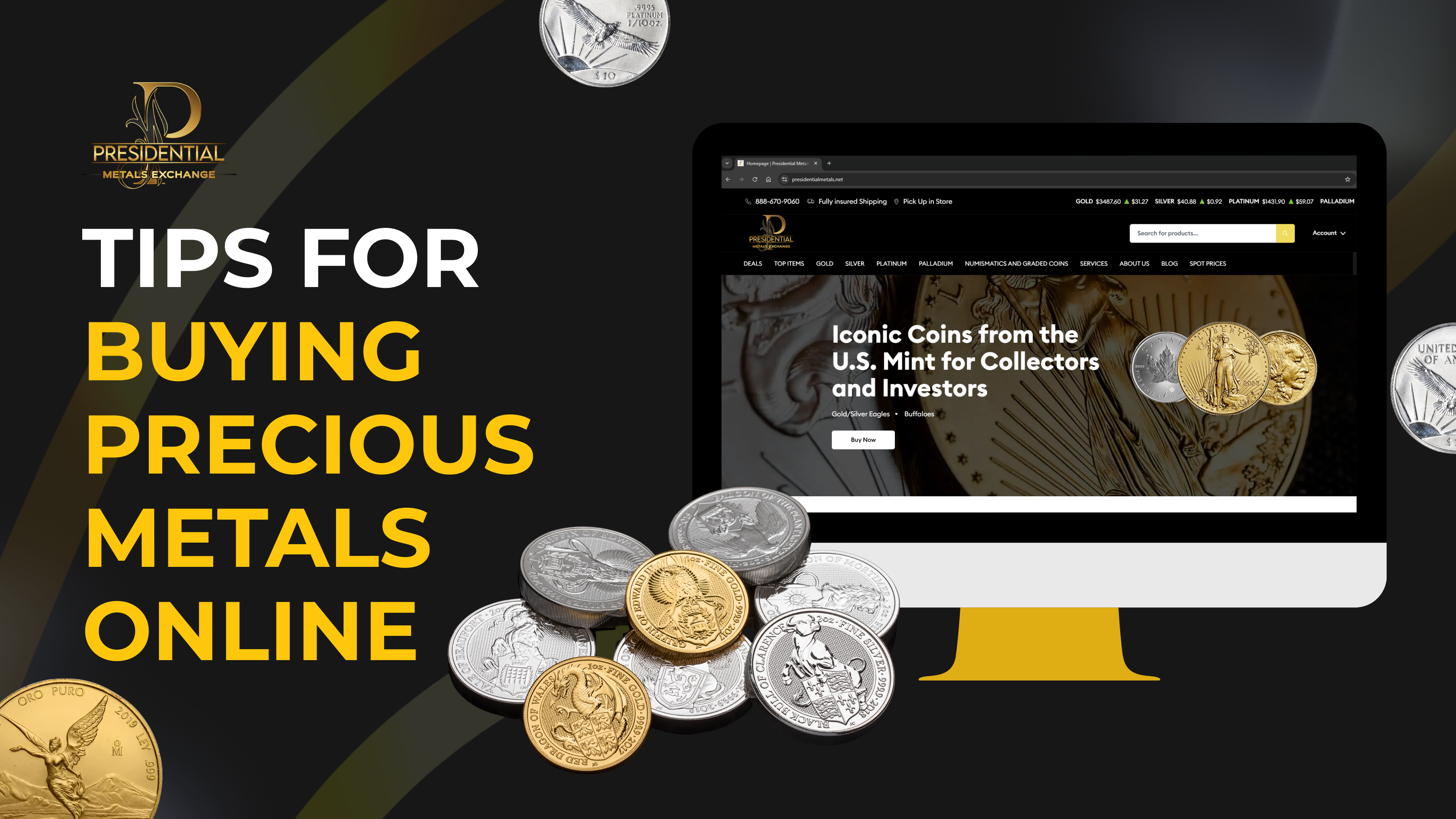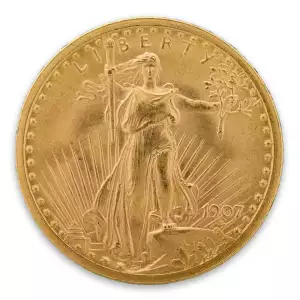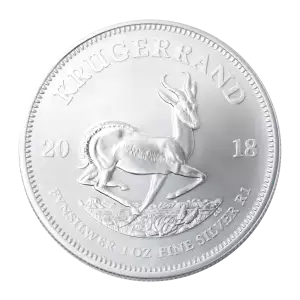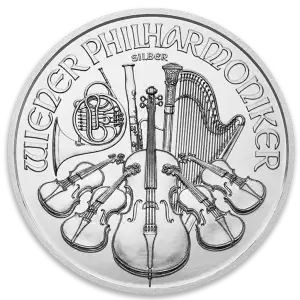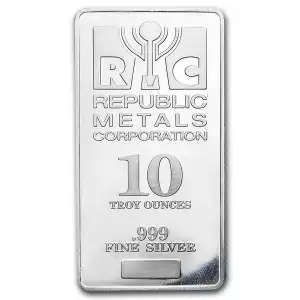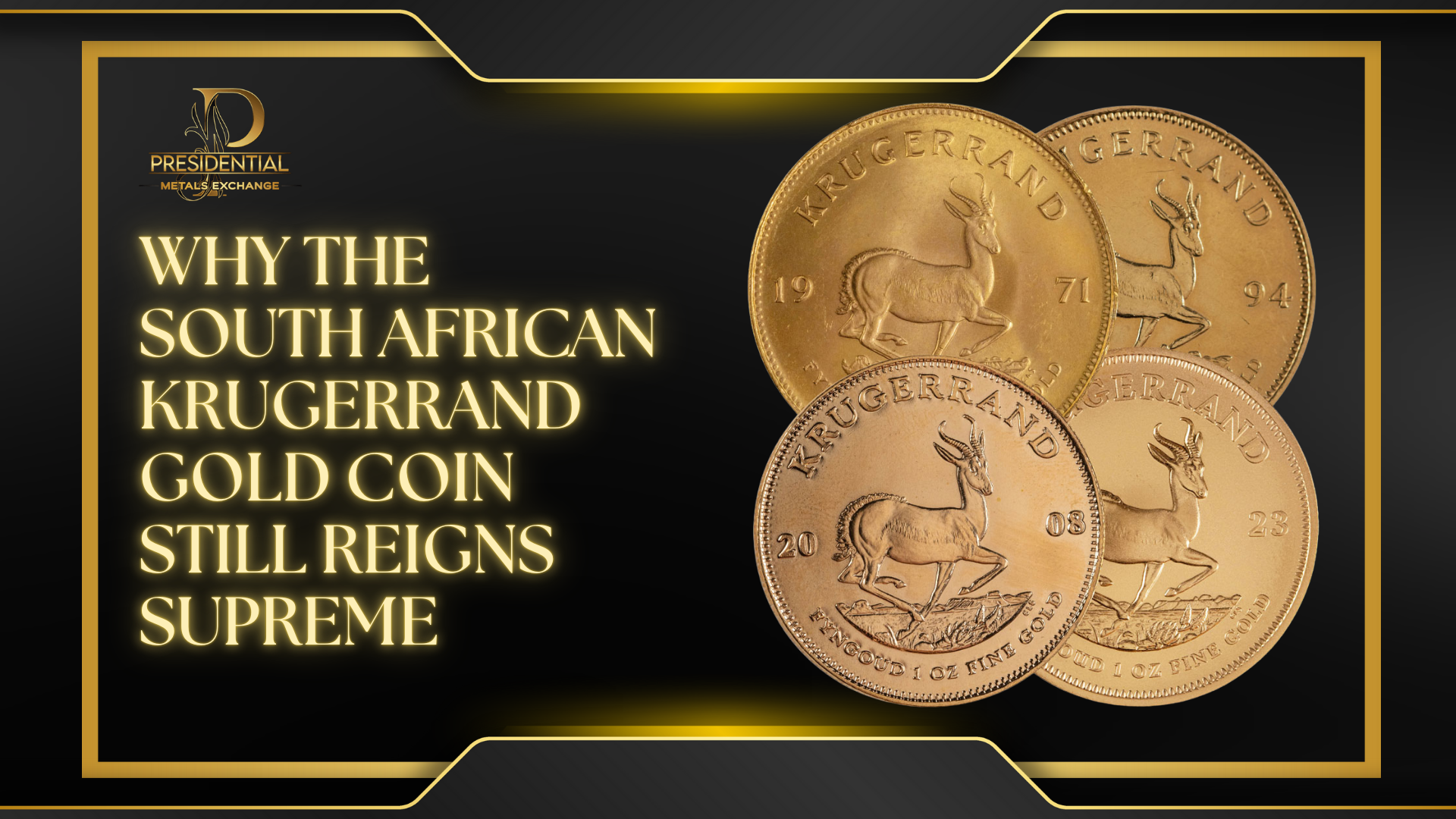
Gold coins come and go, but one name has outlasted them all: the South African Krugerrand. Born in 1967 as the world’s first modern bullion coin, it changed the way people, especially Americans, could invest in gold.
At a time when U.S. citizens couldn’t legally own bars or domestic bullion, the Krugerrand offered a legal, practical way to hold real gold in their hands. By 1980, it controlled more than 90% of the global gold coin market, a dominance no other bullion has ever matched.
Today, in a world flooded with Maple Leafs, Gold Eagles, and countless commemorative issues, the Krugerrand continues to stand apart. Its combination of durability, recognizability, liquidity, and sheer history still makes it the coin many U.S. investors trust first. Understanding why it continues to reign supreme is key for anyone thinking about diversifying with gold.
Historic Market Dominance
Its popularity in the United States was particularly strong. Between 1974 and 1985, more than 22 million Krugerrands were imported into the U.S. alone. No other bullion coin of the time matched this reach.
Unique Accessibility for U.S. Investors
In the late 1960s and early 1970s, U.S. citizens faced restrictions on owning gold bars and domestic bullion. However, they were legally permitted to own foreign gold coins. That loophole made the Krugerrand one of the very few legal avenues available to Americans wanting physical gold.
This legal advantage helped build an American investor base early on. Even when the U.S. banned Krugerrand imports during apartheid in the mid-1980s, the demand never fully disappeared. Once sanctions were lifted in 1991, the coin’s reputation had already been cemented.
Durability That Outlasts the Competition
The Krugerrand is struck from 22-karat gold. That’s 91.67% pure gold alloyed with 8.33% copper. This gives it the weight of one full troy ounce of gold while making it more resistant to scratches and dents.
This durability matters in the U.S. market. Many investors buy bullion not just to vault away but to pass down, trade, or store in safety deposit boxes. Coins like the Canadian Maple Leaf, which is .9999 fine (24-karat), are purer but also softer and more prone to wear. The Krugerrand’s copper tint and toughness make it more practical for frequent handling.
Liquidity in the U.S. Market
Perhaps the most important factor: liquidity. A Krugerrand is instantly recognizable to dealers and investors across the U.S. Because millions were imported during its peak decades, supply is abundant, and resale markets are deep.
For U.S. investors, this means one thing: a Krugerrand can be bought or sold quickly, often at lower spreads compared to less familiar bullion coins. This ready liquidity is critical in times of economic uncertainty when investors want to convert metal into cash quickly.
Fractional Sizes for Every Budget
The first Krugerrands were minted only as 1-ounce coins. But over time, smaller denominations such as the ½ oz, ¼ oz, and ¹⁄₁₀ oz were introduced. For U.S. investors, this makes entry into gold investment far more accessible. A full ounce may be out of reach for some budgets, but fractional coins allow for participation at almost any level.
This flexibility is particularly appealing in the U.S., where investors often dollar-cost average into physical gold, buying smaller amounts regularly rather than making one large purchase.
Eligibility for U.S. Precious Metals IRAs
Another reason the Krugerrand remains relevant in America is its eligibility for inclusion in Precious Metals IRAs. This option allows retirement investors to diversify their portfolios with physical gold while enjoying tax advantages.
Gold Eagles and Maple Leafs are also IRA-eligible, but the Krugerrand’s long-standing trust factor and global recognition make it an equally attractive choice for U.S. savers looking to hedge against inflation and market volatility.
A Blueprint for Every Other Gold Bullion Coin
Without the Krugerrand, there might not be the American Gold Eagle or the Canadian Maple Leaf as we know them. The coin’s success directly inspired the launch of nearly every major bullion coin program worldwide:
- Canada’s Gold Maple Leaf (1979)
- China’s Gold Panda (1982)
- American Gold Eagle (1986)
- Australian Nugget (1987)
- British Britannia (1987)
Even today, Krugerrand mintages dwarf many rivals. By 2018, more than 50 million ounces of Krugerrands had been produced, compared to about 20 million ounces of American Gold Eagles.
Trust and Recognition
Gold investment isn’t just about purity or weight. It’s about trust. In the U.S., investors know the Krugerrand. They’ve seen it in portfolios, vaults, and dealer inventories for decades. Its name recognition alone makes it easier to buy and sell.
When financial markets get shaky, investors tend to flock to what they know. That’s why even with newer competitors on the market, the Krugerrand retains its crown. It represents not only gold but also stability and tradition.
The South African Krugerrand is the gold standard for gold coins. Beginning with its early role as the only legal option for American buyers, to its durability that outperforms 24-karat competitors, to its unmatched liquidity in U.S. markets, it has earned a reputation few others can touch.
Even in an era when American Gold Eagles and Canadian Maple Leafs compete for attention, the Krugerrand remains the benchmark by which all others are judged. It represents more than 50 years of trust, stability, and global recognition.
For U.S. investors building a retirement portfolio, hedging against inflation, or simply wanting a tangible asset that will always find a buyer, the Krugerrand’s crown is secure. It’s more than history; it’s still the present and future of gold investing. At Presidential Metals, you can add Krugerrands to your portfolio with confidence, backed by experts who know the market inside out.
Frequently Asked Questions
1. Are Krugerrand gold coins legal to own in the United States?
Yes. Krugerrands are fully legal to own, buy, and sell in the U.S. Since the lifting of import bans in 1991, they’ve remained one of the most widely traded bullion coins in the American market.
2. Are Krugerrands pure gold?
Krugerrands contain one full troy ounce of gold, but they’re minted in 22-karat (91.67%) gold alloyed with copper. This makes them more durable than 24-karat coins like the Canadian Maple Leaf, while still holding the exact gold content buyers expect.
3. Can Krugerrands be included in a Precious Metals IRA?
Yes. The IRS allows Krugerrands that meet purity and authenticity standards to be held in a self-directed Precious Metals IRA, giving U.S. investors a tax-advantaged way to own physical gold.
4. Why are Krugerrands considered more liquid than other coins?
Because of their long history and global recognition, Krugerrands are instantly accepted by dealers and investors worldwide. In the U.S., millions were imported during the 1970s and 1980s, creating a deep resale market that still exists today.
5. Are Krugerrands a good investment compared to American Gold Eagles?
Both coins are excellent bullion choices, but Krugerrands typically carry lower premiums over spot price because of their massive global supply. Many U.S. investors like to own both; Gold Eagles for their domestic mint backing and Krugerrands for their international recognition and liquidity.
